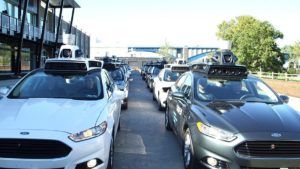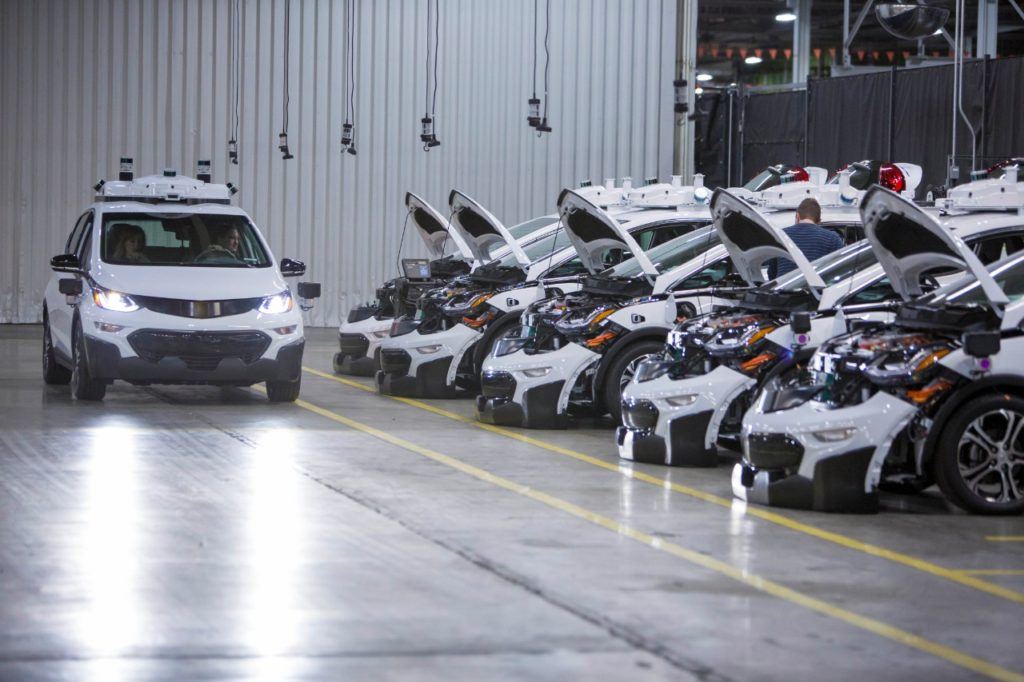Carmakers and tech companies have fallen over one another in recent weeks to show the strides they’ve made with self-driving cars. At CES – usually a stage for bragging about futuristic bona fides – top executives are instead tamping down expectations about the arrival of autonomy.
Truly driverless vehicles are years away, executives from auto giants Toyota Motor Corp. and Hyundai Motor Co., mega supplier Robert Bosch GmbH and ride-hailing service Lyft Inc. said this week. While each of those companies showed off the progress they’re making in the form of concept models or Las Vegas test drives, they’re quick to admit that plenty of major hurdles remain.

“It’s a mistake to say that the finish line is coming up very soon,” said Gill Pratt, chief executive officer of Toyota Research Institute, the carmaker’s $1 billion unit working on artificial intelligence and robotics. “Things are changing rapidly, but this will be a long journey.”
Here are the most interesting things we learned about driverless cars after the first full day of the show.
Bettering Brains
Toyota President Akio Toyoda introduced an electric-vehicle concept called e-Palette, a box on wheels engineered to drive itself on set routes.
In 2020, Toyota will demonstrate the vehicle at the Tokyo Olympics, but even then the car may need as many as two engineers or test drivers to ensure customer safety. Pratt said the technology may not be ready to go it alone – and even if it can, the laws may not allow it yet.
One of the major challenges is replicating the human brain, Pratt said. People can sense gestures and the movements of pedestrians and other drivers and predict where they’re going. AI scientists are working on this, Pratt said, but it’ll take years to get autonomous-vehicle systems to be capable of complete robotic driving.
Hyundai’s Hopes
South Korea’s largest automaker is projecting an even longer time frame than Toyota for when it’ll be able to deliver almost fully self-driving vehicles.
After announcing a deal to collaborate on the technology with U.S. startup Aurora Innovation, whose founders hail from Tesla Inc. and Alphabet Inc.’s Waymo, Hyundai said it’s targeting so-called Level 4 capability by 2021. The fuel-cell vehicle the company debuted at the show, called Nexo, can autonomously park itself into a space and back – with or without a driver.
“We take very conservative steps,” Lee Jinwoo, vice president of Hyundai’s Intelligent Safety Technology Center in Namyang, South Korea, said in an interview at CES. “We want to test and validate the technology first. It will not be for sale in 2021, only testing in city use.”
Drivers (Still) Wanted
Lyft and Aptiv Plc, the self-driving software company spun off by Delphi Automotive, gave reporters rides in semi-autonomous BMWs, and will demonstrate their wares to CES attendees this week by offering trips to more than 20 destinations around Las Vegas.
But the day that costly drivers can be completely removed from the ride-sharing equation – a future teased by General Motors Co. recently – isn’t close, according to Raj Kapoor, Lyft’s chief strategy officer.
“You’re going to need human drivers for a very long time,” Kapoor said. “In the next 10 years there will be more drivers than there are today, because the demand for our service is growing so much, and only so many AVs are coming on line.”
Seeing the Light
Companies pursuing automated driving are appealing to cities to build infrastructure that will aid the functioning of their autonomous vehicles. For Aptiv and Lyft’s demo in Las Vegas, traffic lights along the route are equipped with sensors that give the cars extra directive on whether to stop or go.
This will be the norm in the near term, according to Kay Stepper, vice president of advanced driver-assistance systems and automated driving at Bosch. Pilots like the one GM plans for New York City this year will be restricted to validated routes.
“We know we will get to true Level 5 autonomy,” Pratt said, referring to when automated-driving systems will be able to handle all aspects of piloting vehicles, no matter the roadway or environmental condition. “But we don’t know when.”
Was this article valuable?
Here are more articles you may enjoy.


 Tricolor Trustee Plans to Sue Founder for Auto Dealer’s Collapse
Tricolor Trustee Plans to Sue Founder for Auto Dealer’s Collapse  Atmospheric River to Flood Pacific Northwest Through Week
Atmospheric River to Flood Pacific Northwest Through Week  ‘Dream Is in Sight:’ Chamber, Reinsurers, Insurers Urge Florida to Stay the Course
‘Dream Is in Sight:’ Chamber, Reinsurers, Insurers Urge Florida to Stay the Course  Toyota Unveils Concept LFA Supercar, and It’s Fully Electric
Toyota Unveils Concept LFA Supercar, and It’s Fully Electric 